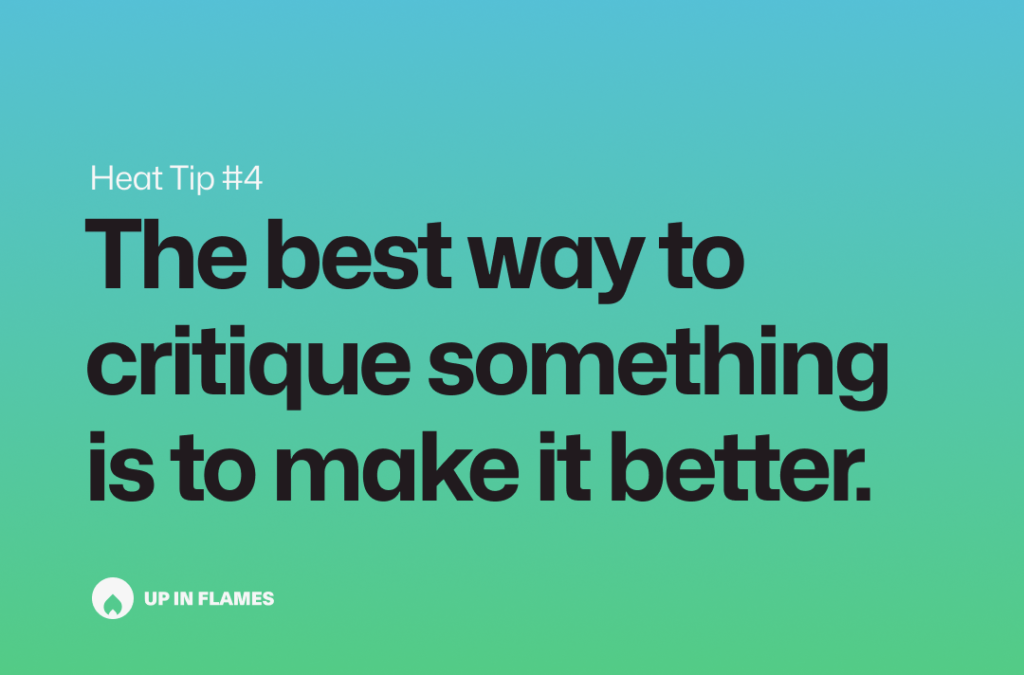Critique is inevitable in the dynamic landscape of project-based work. But how we handle that critique can transform potential setbacks and hurt feelings into powerful strides forward.

Constructive Critique
Critique in a project setting often points to genuine issues or inefficiencies that need addressing. However, the way we deliver and act on this critique can set the tone for collaboration and progress:
- Emphasize that your critique is not aimed at individuals but at processes and outcomes. It’s not about pointing fingers. It’s about spotting real issues and suggesting real improvements.
- Critique the process, not the person. Got a problem? Offer a solution, or better yet, create the solution. What are you doing about it?
- Highlight the importance of pairing critique with actionable suggestions for improvement.
- If elements are out of your control, find the things within your control, consider your circle of influence, and make changes where possible. Something’s got you down? What are you doing about it? Fight the system if you can’t fix the issue within your circle of influence.
Who Benefits?
- Project Managers: Gain tools to steer projects more effectively towards success.
- Team Members: Develop a proactive mindset that encourages personal and professional growth.
- The Entire Project: Benefits from iterative improvements, boosting overall quality and efficiency.
Where to Implement
Encourage a culture of constructive critique in various aspects of the project:
- In regular project reviews or retrospectives.
- During decision-making processes when evaluating alternatives.
- In daily stand-ups or check-ins that highlight ongoing concerns.
- For processes, when you notice inefficiencies, write them down and provide targeted feedback.
Practical Tips
- Encourage Ownership: Motivate team members to identify problems and take charge of crafting solutions.
- Document: Record both the critique and the improvements made. This helps you track progress and understand the impact of changes.
- Foster an Open Environment: Create a space where team members feel safe to express concerns and propose improvements without fear of repercussion.
- Focus on Training: Equip your team with the skills to identify underlying issues and solve them, not just apply temporary fixes.
Conclusion
Critique isn’t just about finding what’s wrong; it’s your chance to step up and make things right. Next time you catch a flaw or hear a bit of feedback, think about how you can use it to push for change and improvement. This approach doesn’t just fix issues—it transforms how your team tackles challenges together, making every project smoother and more successful.

